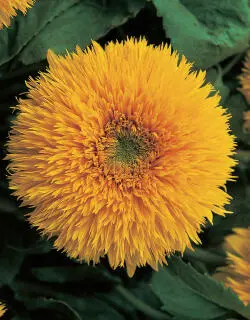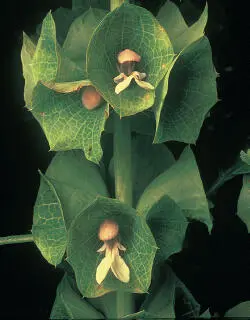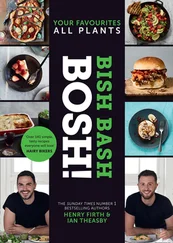1 ...6 7 8 10 11 12 ...29 Aspect:Full sun
Season of interest:Summer
Height and spread:To 15cm × 25cm (6in × 10in)
Companion plants:Good on their own in a hot, dry container in the sun or to add colour to such succulents as echeverias, sedums or sempervivums.
Annuals good for cut flowers
Rudbeckia hirta
Half hardy perennials grown as annuals
Dwarf, intermediate and tall hybrids of this North American genus have dark stems and simple leaves, lightly covered with short hairs. The daisy flowers, with their conspicuous ray florets and dark central cones, come in warm tones from yellow through to mahogany. Good cutting varieties include the double-flowered ‘Cherokee Sunset’, spidery-bloomed ‘Chim-chimenee’, and the green and golden ‘Irish Eyes’.
Soil preference:Fertile, moisture-retentive and heavy but drained
Aspect:Sun or part shade
Season of interest:Summer, autumn
Height and spread:15–60cm × 30cm (6in–2ft × 1ft)
Companion plants:Use these plants to extend summer displays and blend with late flowering blue and purple salvias and perennial asters. They are also bewitching with soft, flowing grasses or sedges such as bronze leaved Carex and Stipa arundinacea .
Antirrhinum majus tall varieties
Half hardy to hardy perennial, usually grown as an annual
Familiar snapdragons such as ‘Axiom Series’ which have been bred to grow as tall plants, each with a straight, single stem ending in a long spike bearing the flowers in a broad colour range, including red, pink, yellow and bicolours. Plant in a sheltered spot or raise under glass.
Soil preference:Fertile, well-drained
Aspect:Sun, often raised under glass
Season of interest:Constant, depending when planted
Height and spread:To 75cm (30in)
Companion plants:Pretty plants for a summer kitchen garden, along with such cutting flowers as marigolds, larkspurs, dahlias and Gladiolus.
Helianthus annuus
Sunflower – pollen-free varieties Hardy annual

Single or branched stems may grow from a single seed, furnished with broad, slightly hoary, simple leaves and massive flowerheads with bright yellow, orange or maroon ray florets. Selections for cutting include pollen-free ‘Bees Knees’, whose flower colours include orange, lemon yellow, rich gold and deep reddish brown and orange, as well as the powderpuff-like ‘Double Shine’.
Soil preference:Fertile, free-draining
Aspect:Sun
Season of interest:Summer
Height and spread:Variable to 2m × 30cm (6ft × 1ft)
Companion plants:Too dominant to harmonize with other annuals, but very effective when planted as short-term screens or along walls or hedges. Pollen-free varieties are NOT GOOD for wildlife.
Dianthus barbatus ‘Summer Sundae’
Annual Sweet William Hardy annual or biennial
An annual form of the familiar sweet William described here. Although spring-sown seed will produce flowers the same season, autumn-sown plants will grow a little larger and flower for longer. A valuable variety, though, for speedy cut flowers. The multi-headed flowers are sweetly fragrant and last well in water.
Soil preference:Any free-draining
Aspect:Sun
Season of interest:Summer
Height and spread:45–60cm × 20cm (18in–2ft × 8in)
Companion plants:All sweet Williams make excellent border plants, as they are at home with most perennials. Particularly effective with such flowery summer annuals as cornflowers, larkspurs, marigolds and poppies.
Callistephus hybrids
Bedding Asters Half hardy annual
Popular both as bedding or for cut flowers, these daisy relatives have showy ray florets in pink, purple, white, cream and wine red. Many different forms are widely available. Good cutting kinds, with long lasting qualities, include ‘Truffaunt’s Peony Mixed’, whose petals are incurved, and ‘Super Chinensis’, which has single flowers with bold, yellow centres.
Soil preference:Fertile, free-draining
Aspect:Sun or part shade
Season of interest:Summer
Height and spread:30cm × 20cm (1ft × 8in)
Companion plants:If varieties are chosen with gentle colours, asters make great companion plants for red, pink or white bedded roses. Also fine in rows in a kitchen garden.
Molucella laevis
Bells of Ireland Half hardy annual

A member of the deadnettle family whose main features are the large, pale green, bell-shaped bracts which surround the tiny, off-white flowers, and which persist for the whole growing season. The foliage is unremarkable. Stems with the bracts are as effective when used dried as when they are fresh.
Soil preference:Fertile, free-draining
Aspect:Sun
Season of interest:Summer
Height and spread:60cm × 25cm (2ft × 10in)
Companion plants:Normally grown for cutting though Molucella can look attractive among white flowers or with silvery foliage plants such as Artemisia ludoviciana or Salvia farinacea ‘Victoria’.
An informal grouping of Campanula lactiflora with a red flowered opium poppy.
Planting Schemes Using Annuals
The main point about annuals – and therein lies their charm – is that they are shortlived. Even the most stalwart, enduring individuals are done after a few months; few last for more than half a summer and many flower and die within a few weeks. Effective planting, therefore, depends on rotation, careful timing, large numbers and bold placing.
Many annuals are also somewhat unpredictable, growing larger and brighter than expected in favourable years, but failing to achieve their potential in difficult seasons. Since they seed copiously and since many adopt the role of biennials and will survive a winter, having germinated in the autumn, their short lives are often compensated for by rapid reproduction and a sustained succession. With the hardiest, such as Nigella, Calendula or Papaver, flowering can sometimes come in waves, with early and copious summer flushes from seed sown the previous autumn, a further wave from spring-germinated seed and a finale from summer-sown seed. Flowering times can also be brought forward by artificial sowing, pre-season, in trays or cells and planting out the young plants. Tender annuals will not sustain their colonies outdoors, where winter frost is expected, but hardy species can be left to their own devices and should ensure colour through much of the growing season.
Annuals as blenders
Although they work very well in their own company, the most common use of annuals is as gap fillers, or to accompany other, more permanent plants in mixed schemes. The main picture shows an informal grouping of Campanula lactiflora (bellflower) with red-flowered opium poppies. The foliage of both plants contrast well, the pale, glaucous leaves of the poppy having a markedly different colour, texture and shape from the smaller, rougher leaves of the bellflower. As they bloom, the large poppies are backed up by the starry, curled petals of the bells in their pastel lavender tones.
Читать дальше














